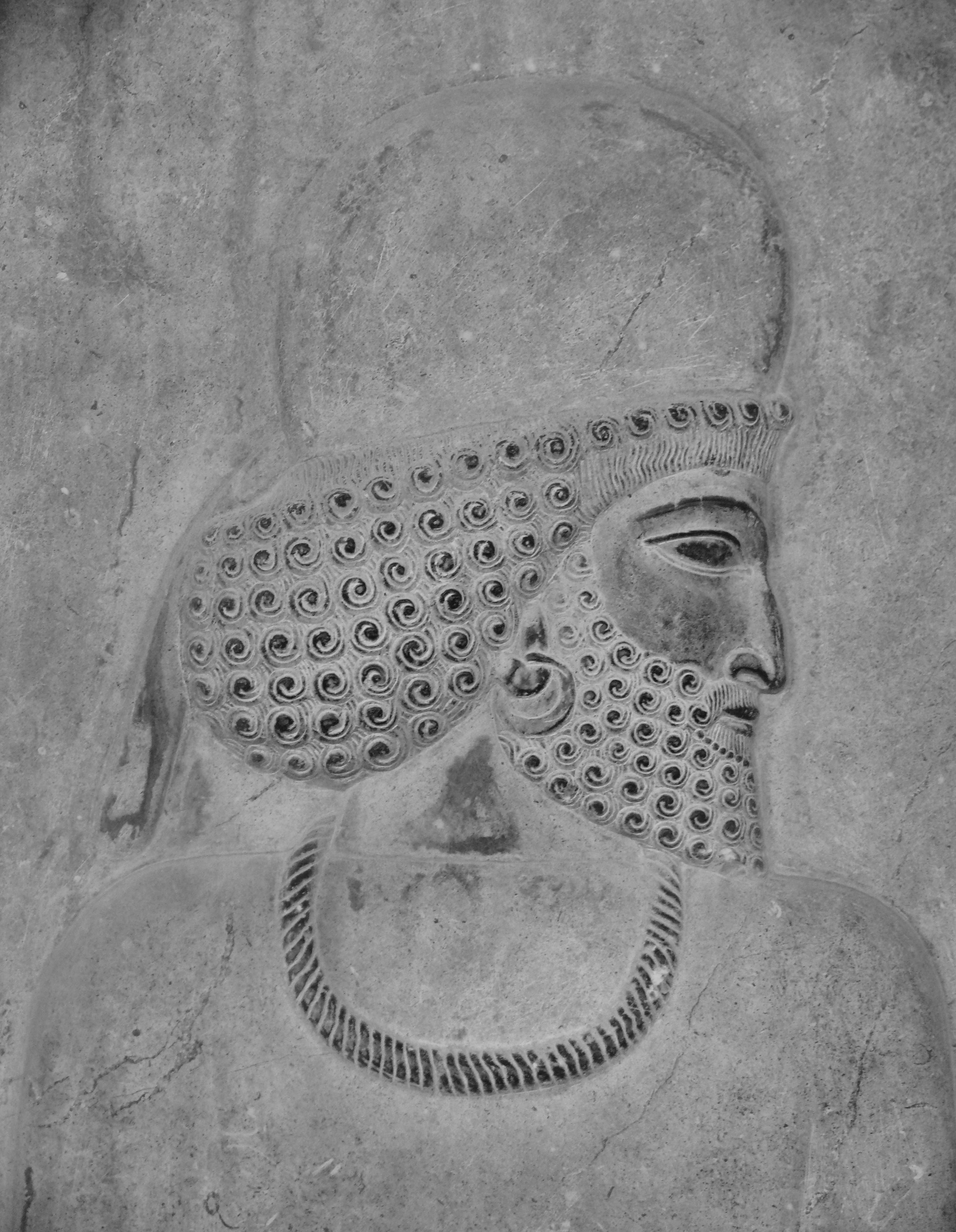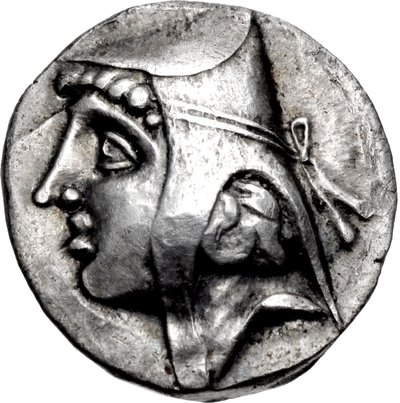|
Osroes II
Osroes II (also spelled Chosroes II or Khosrow II; ''Husrōw''), was a claimant of the throne of the Parthian Empire c. 190. He is unknown to history except for the coins he issued. The date of his reign suggests that he rebelled against Vologases IV but was unable to maintain himself against Vologases V. His coins were issued by the mint at Ecbatana, suggesting that he controlled Media Media may refer to: Communication * Means of communication, tools and channels used to deliver information or data ** Advertising media, various media, content, buying and placement for advertising ** Interactive media, media that is inter .... References Sources * {{DEFAULTSORT:Osroes 02 Of Parthia 2nd-century Parthian monarchs 2nd-century Iranian people ... [...More Info...] [...Related Items...] OR: [Wikipedia] [Google] [Baidu] |
Ecbatana
Ecbatana () was an ancient city, the capital of the Median kingdom, and the first capital in History of Iran, Iranian history. It later became the summer capital of the Achaemenid Empire, Achaemenid and Parthian Empire, Parthian empires.Nardo, Don. "Ecbatana." ''The Greenhaven Encyclopedia of Ancient Mesopotamia'', edited by Robert B. Kebric, Greenhaven Press, 2007, pp. 97-98. ''Gale In Context: World History'', link.gale.com/apps/doc/CX3205100129/WHIC?u=wylrc_uwyoming&sid=summon&xid=e9682d3c. Accessed 20 Nov. 2022. It was also an important city during the Seleucid Empire, Seleucid and Sasanian Empire, Sasanian empires. It is believed that Ecbatana is located in the Zagros Mountains, the east of central Mesopotamia, on Hagmatana Hill (Tappe-ye Hagmatāna). Ecbatana's strategic location and resources probably made it a popular site even before the 1st millennium BC. Along with Athens in Greece, Rome in Italy and Susa in Iran, Ecbatana is one of the few ancient cities in the world th ... [...More Info...] [...Related Items...] OR: [Wikipedia] [Google] [Baidu] |
Parthian Empire
The Parthian Empire (), also known as the Arsacid Empire (), was a major Iranian political and cultural power centered in ancient Iran from 247 BC to 224 AD. Its latter name comes from its founder, Arsaces I, who led the Parni tribe in conquering the region of Parthia in Iran's northeast, then a satrapy (province) under Andragoras, who was rebelling against the Seleucid Empire. Mithridates I ( BC) greatly expanded the empire by seizing Media and Mesopotamia from the Seleucids. At its height, the Parthian Empire stretched from the northern reaches of the Euphrates, in what is now central-eastern Turkey, to present-day Afghanistan and western Pakistan. The empire, located on the Silk Road trade route between the Roman Empire in the Mediterranean Basin and the Han dynasty of China, became a center of trade and commerce. The Parthians largely adopted the art, architecture, religious beliefs, and regalia of their culturally heterogeneous empire, which encompassed Pe ... [...More Info...] [...Related Items...] OR: [Wikipedia] [Google] [Baidu] |
Vologases IV
Vologases IV ( ''Walagash'') was King of Kings of the Parthian Empire from 147 to 191. He was the son of Mithridates V (). Vologases spent the early years of his reign re-asserting Parthian control over the Kingdom of Characene. From 161 to 166, he waged war against the Roman Empire; although initially successful, conquering Armenia and Syria, he was eventually pushed back, briefly losing control of the Parthian capitals of Seleucia and Ctesiphon to the Romans. The Romans suffered heavy losses from a plague erupting from Seleucia in 166, forcing them to withdraw. The war ended soon afterward, with Vologases losing most of northern Mesopotamia to the Romans. He died in 191 and was succeeded by his son Vologases V. Name Vologases is the Greek and Latin form of the Parthian ''Walagaš'' (). The name is also attested in New Persian as ''Balāsh'' and Middle Persian as ''Wardākhsh'' (also spelled ''Walākhsh''). The etymology of the name is unclear, although Ferdinand Justi pro ... [...More Info...] [...Related Items...] OR: [Wikipedia] [Google] [Baidu] |
Vologases V
Vologases V ( ''Walagash'') was King of Kings of the Parthian Empire from 191 to 208. As king of Armenia (), he is known as Vologases II. Not much is known about his period of kingship of Armenia, except that he put his son Rev I () on the Iberian throne in 189. Vologases succeeded his father Vologases IV as king of the Parthian Empire in 191; it is uncertain if the transition of power was peaceful or if Vologases took the throne in a civil war. When Vologases acceded the Parthian throne, he passed the Armenian throne to his son Khosrov I (). Vologases' reign was marked by war with the Roman Empire, lasting from 195 to 202, resulting in the brief capture of the Parthian capital of Ctesiphon, and reaffirmation of Roman rule in Armenia and northern Mesopotamia. At the same time, internal conflict took place in the Parthian realm, with the local Persian prince Pabag seizing Istakhr, the capital of the southern Iranian region of Persis. Name Vologases is the Greek and Latin form ... [...More Info...] [...Related Items...] OR: [Wikipedia] [Google] [Baidu] |
Arsacid Dynasty Of Parthia
The Parthian Empire (), also known as the Arsacid Empire (), was a major Iranian political and cultural power centered in ancient Iran from 247 BC to 224 AD. Its latter name comes from its founder, Arsaces I, who led the Parni tribe in conquering the region of Parthia in Iran's northeast, then a satrapy (province) under Andragoras, who was rebelling against the Seleucid Empire. Mithridates I ( BC) greatly expanded the empire by seizing Media and Mesopotamia from the Seleucids. At its height, the Parthian Empire stretched from the northern reaches of the Euphrates, in what is now central-eastern Turkey, to present-day Afghanistan and western Pakistan. The empire, located on the Silk Road trade route between the Roman Empire in the Mediterranean Basin and the Han dynasty of China, became a center of trade and commerce. The Parthians largely adopted the art, architecture, religious beliefs, and regalia of their culturally heterogeneous empire, which encompassed Pers ... [...More Info...] [...Related Items...] OR: [Wikipedia] [Google] [Baidu] |
Zoroastrianism
Zoroastrianism ( ), also called Mazdayasnā () or Beh-dīn (), is an Iranian religions, Iranian religion centred on the Avesta and the teachings of Zoroaster, Zarathushtra Spitama, who is more commonly referred to by the Greek translation, Zoroaster ( ). Among the world's oldest organized faiths, its adherents exalt an Creator deity, uncreated, Omnibenevolence, benevolent, and List of knowledge deities#Persian mythology, all-wise deity known as Ahura Mazda (), who is hailed as the supreme being of the universe. Opposed to Ahura Mazda is Ahriman, Angra Mainyu (), who is personified as a List of death deities#Persian-Zoroastrian, destructive spirit and the adversary of all things that are good. As such, the Zoroastrian religion combines a Dualism in cosmology, dualistic cosmology of good and evil with an eschatological outlook predicting the Frashokereti, ultimate triumph of Ahura Mazda over evil. Opinions vary among scholars as to whether Zoroastrianism is monotheistic, polyth ... [...More Info...] [...Related Items...] OR: [Wikipedia] [Google] [Baidu] |
Parthia
Parthia ( ''Parθava''; ''Parθaw''; ''Pahlaw'') is a historical region located in northeastern Greater Iran. It was conquered and subjugated by the empire of the Medes during the 7th century BC, was incorporated into the subsequent Achaemenid Empire under Cyrus the Great in the 6th century BC, and formed part of the Hellenistic Seleucid Empire after the Wars of Alexander the Great, 4th-century BC conquests of Alexander the Great. The region later served as the political and cultural base of the Eastern Iranian languages, Eastern Iranian Parni people and Arsacid dynasty, rulers of the Parthian Empire (247 BC – 224 AD). The Sasanian Empire, the last state of History of Iran, pre-Islamic Iran, also held the region and maintained the Seven Great Houses of Iran, seven Parthian clans as part of their feudal aristocracy. Name The name "Parthia" is a continuation from Latin language, Latin ', from Old Persian ', which was the Parthian language self-designator signifying "of the Pa ... [...More Info...] [...Related Items...] OR: [Wikipedia] [Google] [Baidu] |
Vologases IV Of Parthia
Vologases IV ( ''Walagash'') was King of Kings of the Parthian Empire from 147 to 191. He was the son of Mithridates V of Parthia, Mithridates V (). Vologases spent the early years of his reign re-asserting Parthian control over the Characene, Kingdom of Characene. From 161 to 166, he waged war against the Roman Empire; although initially successful, conquering Kingdom of Armenia (antiquity), Armenia and Roman Syria, Syria, he was eventually pushed back, briefly losing control of the Parthian capitals of Seleucia and Ctesiphon to the Romans. The Romans suffered heavy losses from a plague erupting from Seleucia in 166, forcing them to withdraw. The war ended soon afterward, with Vologases losing most of northern Mesopotamia to the Romans. He died in 191 and was succeeded by his son Vologases V. Name Vologases is the Greek language, Greek and Latin form of the Parthian language, Parthian ''Walagaš'' (). The name is also attested in New Persian as ''Balāsh'' and Middle Persian as ... [...More Info...] [...Related Items...] OR: [Wikipedia] [Google] [Baidu] |
Media (region)
Media (, Middle Persian: ''Mād'') is an Iron Age region of north-western Iran, best known for having been the political and cultural base of the Medes. During the Achaemenid period, it comprised present-day Iranian Azerbaijan, Iranian Kurdistan and western Tabaristan. As a satrapy under Achaemenid rule, it would eventually encompass a wider region, stretching to southern Dagestan in the north. However, after the wars of Alexander the Great, the northern parts were separated due to the Partition of Babylon and became known as ''Atropatene'', while the remaining region became known as ''Lesser Media''. History Under the Medes In 678 BC, Deioces united the Medes, Median tribes of Media and made the first Iran, Iranian Empire. His grandson Cyaxares managed to unite all Iranian peoples, Iranian tribes of History of Iran, Ancient Iran and made his empire a major power. When Cyaxares died he was succeeded by his son, Astyages, who was the last king of the Median Empire. Under the Ac ... [...More Info...] [...Related Items...] OR: [Wikipedia] [Google] [Baidu] |
List Of Parthian Monarchs
The Parthian, or Arsacid, monarchs were the rulers of Iran from their victories against the Hellenistic Seleucid Empire in the 140s BC (although they had ruled a smaller kingdom in the region of Parthia for roughly a century at that point, founded by Arsaces I) until the defeat of the last Parthian king, Artabanus IV, at the Battle of Hormozdgan in AD 224. At the height of their power, the Parthian kings ruled an empire stretching from present-day central-eastern Turkey to present-day Afghanistan and western Pakistan. Chronology of Parthian kings The rough sequence of Parthian rulers is relatively well-established from surviving literary sources and traditions, especially histories and accounts written by Roman historians, but many uncertainties exist in terms of the details. The modern understanding of the chronology and sequence of the Parthian rulers is based on surviving sources, but also on information that can be gleaned from Parthian coins, such as dates and the name ... [...More Info...] [...Related Items...] OR: [Wikipedia] [Google] [Baidu] |





